Beyond enabling agents to simply make and receive phone calls, call center technologies have become much more advanced thanks to the emerging advancements in AI and communication technologies. With the right call center technology, you can automate many processes within your call center, dramatically improve the efficiency and productivity of your customer support and sales teams, deliver outstanding service consumers have come to expect, and convert leads more efficiently. Below is everything you’ve ever wanted to know about the key call center technologies in use today and call center technology trends that are currently shaping the industry.
What is Call Center Technology?
In general, call center technology encompasses a wide range of call center software solutions and tools that help both customer-facing and sales teams handle inbound and outbound communications with customers and prospects. These solutions are aimed to streamline and optimize the day-to-day call center operations, improve customer experience, increase the productivity of call center agents, and reduce operational costs.
From ACD, call routing systems, and IVR to help inbound call center teams handle large call volumes and resolve customer issues quickly and efficiently to predictive dialing tools to help outbound call center teams convert leads and generate sales – call center technologies help call centers run smoothly and efficiently. Depending on the size and type of your business, you may not necessarily need all the technologies outlined here. However, knowing what basic and advanced call center technology tools exist will help you choose the right call center software solution for your business.
Core Call Center Technologies Used in Call Centers
VoIP Telephony
VoIP (Voice Over Internet Protocol) is the core technology used in modern call centers that allows businesses to make and receive phone calls over the internet instead of using analog landlines. With a VoIP phone system, you can basically handle inbound and outbound calls using any device, from anywhere in the world, as long as you have a reliable internet connection, making it a great solution for managing a remote call center.
In addition to enabling high-quality calling over the internet, VoIP technology is becoming increasingly preferred by many call centers due to its cost-efficiency. Firstly, VoIP eliminates the need to invest in traditional PBX telephony hardware and legacy phone networks. Secondly, since calls are handled via the internet, businesses can save on international and long-distance phone calls. It has been estimated that after switching to VoIP, businesses see an average savings of 25% to 40%.
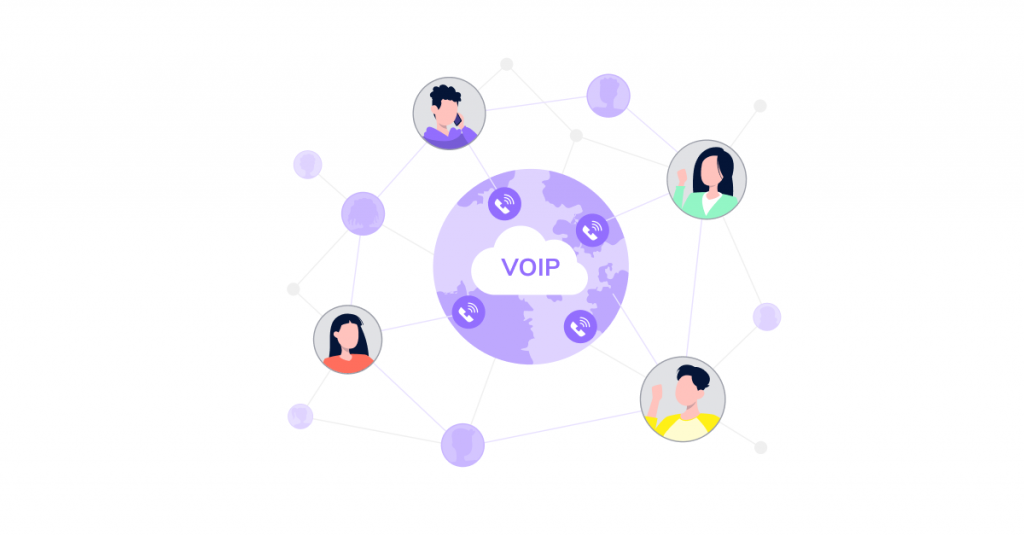
On top of that, VoIP phone systems are easily scalable, enabling you to add virtual numbers, users, or features to adapt to the changing needs of your growing business almost instantly. Besides, VoIP call center solutions can be integrated with third-party apps, such as CRM (Customer Relationship Management) systems, helpdesk software, team collaboration tools, and productivity apps. That can help you improve your team’s efficiency and automate workflows.
ACD and Call Routing
Automatic Call Distribution (ACD) is one of the most important technologies in call centers that primarily deal with inbound calls. ACD software automatically distributes incoming calls among available agents based on certain predefined call routing rules, ensuring that customer calls are always routed to the most appropriate departments or teams. Distributing calls fairly among agents also helps balance the workload, improving the experience for agents.
Call center providers may offer different call routing rules. E.g., with time-based routing, your call routing software will distribute incoming calls based on agents’ time zones or business hours. That is particularly widely used in geographically distributed call centers that operate across multiple time zones.
Another example is a skills-based routing that is used to route customer calls to agents with certain skills, expertise, or product knowledge. This is, in fact, one of the most efficient call routing strategies that you can use as it ensures your callers will always be directed to the agents who are best qualified to handle their queries, helping you reduce the Average Handle Times (AHT) and improve your First Call Resolution (FCR) rates.
Interactive Voice Response (IVR)
Along with ACD and call routing, Interactive Voice Response (IVR) is another critical technology for inbound call centers. IVR systems interact with callers through pre-recorded voice prompts and menu options, enabling them to navigate through a series of choices to access the information they need or connect to the relevant department or agent group. That eliminates the need for call center reps to manually route or transfer calls, saving them time and effort, reducing human error, and streamlining the entire inbound call handling process.
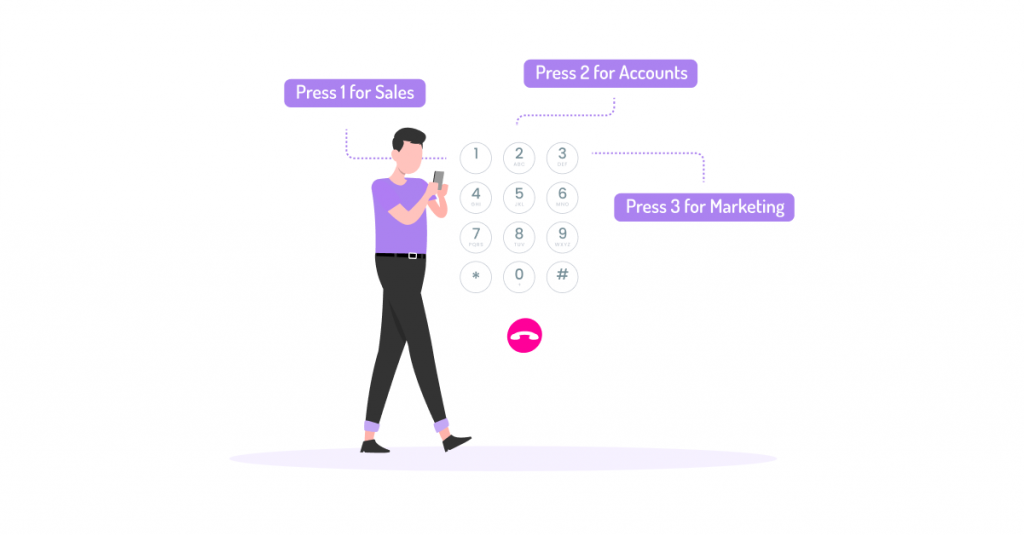
By capturing additional information from callers, such as the type of issue they are facing or language preferences, IVR systems help route callers to the relevant destination more accurately, increasing your FCR rates. And when customers get their issues resolved during the first interaction without being transferred back and forth between departments or agents, that improves customer satisfaction and overall customer experience.
Moreover, IVR self-service menus can help callers access information and resolve some basic issues on their own, without requiring human interaction. That could be, for example, checking the order status or account balance, scheduling appointments, updating account details, or processing bill payments, making IVR a great self-service tool for your customers.
Call Queuing
Call queuing is another essential call center technology that can help inbound call centers optimize the process of handling incoming calls and improve customer experience when call volumes exceed agent capacity. Call queuing software automatically distributes the inbound call volume by assigning calls to the corresponding call queues if there are no available agents to handle the calls immediately. Paired with call routing and IVR, call queue management features help call centers manage high call volumes in a more organized and efficient way.
When it comes to call queue management, there’s one distinctive feature that can dramatically improve the experience for callers – queue callback. Offering callers a queue callback option enables them to request a return call from an agent once they reach the front of the queue without having to waste time waiting on hold for the available agent to respond.
Since long wait times can negatively impact customer experience, queue callback is a critical call center technology for today’s call centers. In fact, according to a study by Software Advice, over 60% of consumers feel that waiting on hold for even one minute feels like too much for them, while more than one-quarter of the survey respondents indicated they’d always prefer a callback over any amount of time spent on hold.
Besides offering callbacks, you can additionally improve the experience for callers waiting on hold with custom music, pre-recorded messages, or by simply informing callers of their place in the queue and estimated wait times. That helps set the right expectations and, most importantly, reduce the number of abandoned calls, lowering your Call Abandonment Rate.
Call Recording
Call recording is a standard call center feature that allows you to record inbound and outbound calls either automatically or on demand. Being able to record customer calls brings a number of benefits. It can help you avoid and resolve disputes with customers as you can always review recorded calls to verify the accuracy of call details and know exactly what was said by the agent and the customer throughout the conversation.
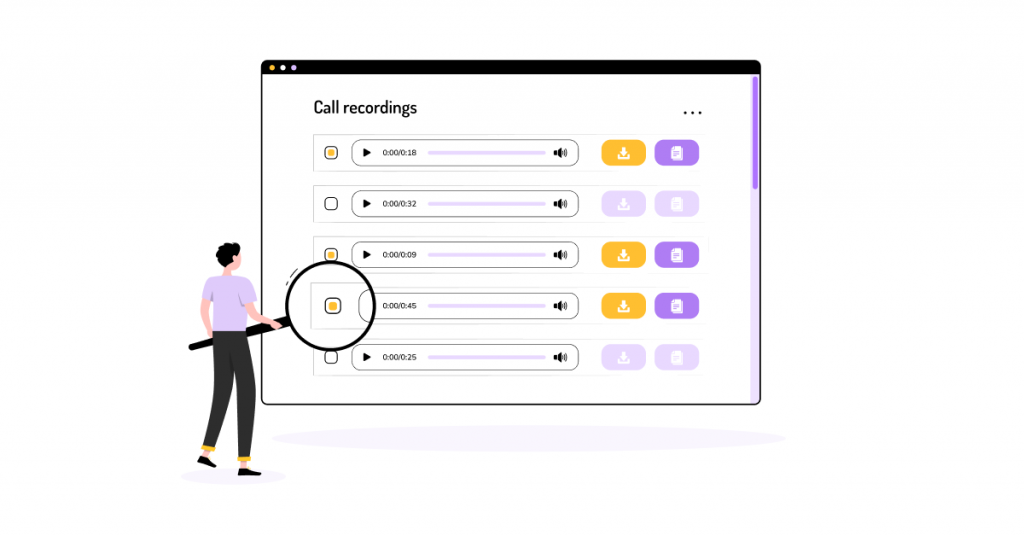
Another way to use call recordings is to enhance your agent training sessions. By showing your newly hired agents examples of excellent call handling, you can speed up and improve the onboarding and training process. In addition, reviewing call recordings can help you better assess agent performance, see where your call center reps might require more in-depth training, and identify other improvement opportunities.
Call recording isn’t exactly an advanced call center technology but rather a basic feature of call center solutions, however, you may come across certain limitations to it with various providers. For example, while some will allow you to store your call recordings for 30 or 90 days unless you upgrade to a higher-priced plan, VoiceSpin call recording software offers unlimited call recording storage thanks to its cloud infrastructure.
Real-time Call Monitoring
Real-time call monitoring technology allows you to monitor customer-agent conversations by listening in on calls in real time. In addition to reviewing call recordings and agent performance metrics, monitoring calls as they are happening can give contact center managers and supervisors a better understanding of how their team members are performing, how professionally they interact with customers or prospects, and how well they adhere to call scripts, quality standards, and best practices.
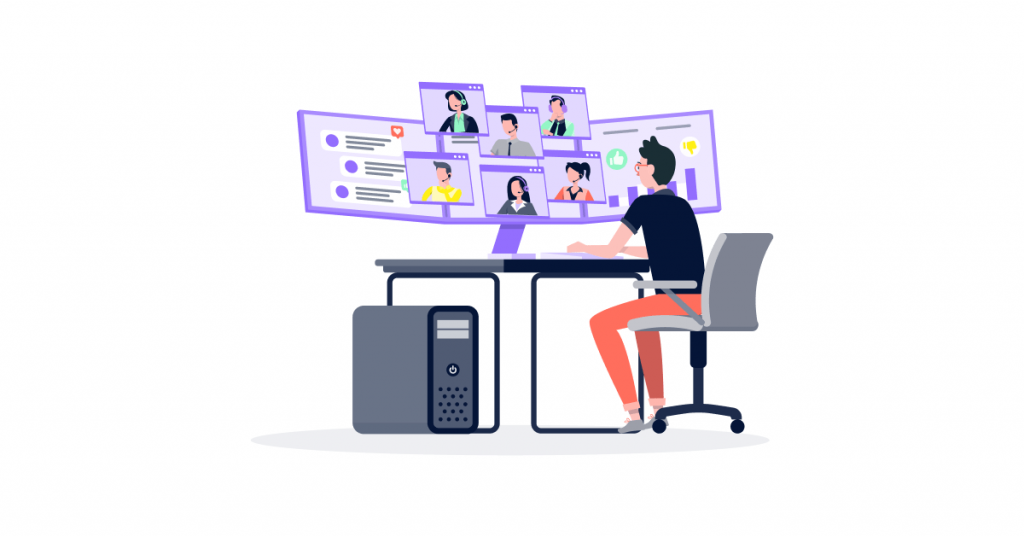
Many real-time call monitoring software providers also offer the call whisper feature. Besides simply listening in on active calls, call whispering allows you to join in on live calls and secretly speak to your agents without the customer or prospect on the other end hearing anything or even being aware of your presence. Managers can use it to provide on-the-fly guidance and directions to struggling agents on complex calls without disrupting the conversation flow. That can also help you improve the onboarding process and get your new hires up to speed faster.
Reporting and Analytics
Call center reporting and analytics capabilities of call center solutions enable you to stay on top of your contact center performance. With the right reporting tool, you can track your most critical metrics and KPIs (Key Performance Indicators) through real-time and historical reports. You can monitor a variety of metrics like call volumes, First Call Resolution rates, average call duration, call transfer rates, abandoned calls, and many more. That will help you evaluate the efficiency of your operations, measure team performance, and identify where improvements are needed.
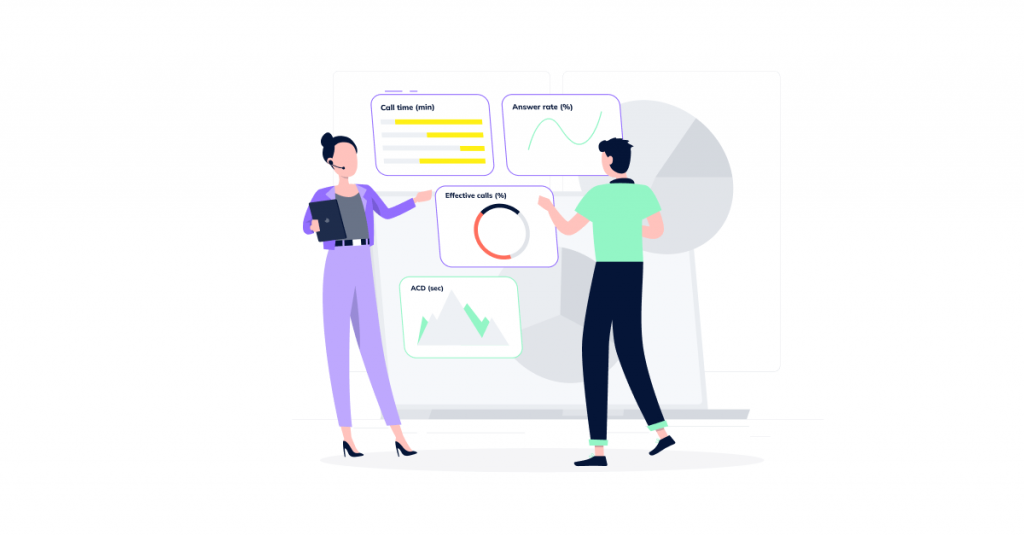
E.g., with VoiceSpin’s call reporting software, you can track your team’s activity through the real-time dashboard and generate pre-built or custom reports to measure exactly what you need and instantly see what’s working well and what isn’t. Based on these reports, you can make more informed decisions, better adjust your staffing levels, enhance your agent training, and improve your internal processes.
Auto Dialing
For outbound call centers, auto dialing is a critical contact center technology many outbound sales teams rely on. Instead of dialing prospects or customers manually, auto dialing solutions can automate and optimize the entire process of placing outbound calls so that agents don’t have to spend time and effort doing it manually. Auto dialing solutions may offer different dialing modes that enable the dialing software to operate in a slightly different way. Below are the most common types of auto dialing software used in outbound call centers:
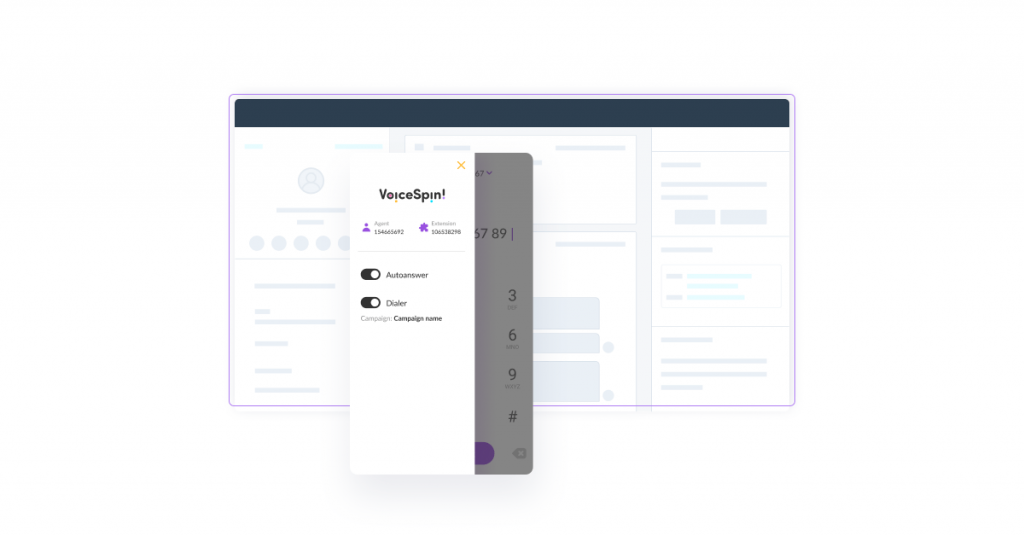
Power dialers
A power dialer automatically dials numbers one after another from an agent’s calling queue, and it only dials one number per agent. If the number is busy or disconnected, it will dial the next number from the list. Power dialers are widely used by telemarketing campaigns, collection agencies, retail companies, healthcare providers, financial service providers, and many other industries.
Predictive dialers
Unlike power dialers that dial numbers subsequently and initiate one call per agent, predictive dialers initiate multiple calls per agent even before an agent becomes available to take the call. Driven by Artificial Intelligence (AI) and machine learning (ML) algorithms, predictive dialers are able to predict agent availability based on certain real-time and historical metrics. That means as soon as an agent finishes their current call, there is always the next call they can take immediately, minimizing idle times and increasing the number of calls agents can handle over a certain period. Predictive dialers can significantly boost agent productivity, making them ideal solutions for high-velocity sales teams.
Computer Telephony Integration (CTI)
Computer Telephony Integration (CTI) is a critical technology used in call centers and contact centers that allows for the integration of call center solutions with CRM systems and other business applications. Integrating your call center software with your CRM system can bring you a wealth of benefits and make things easier for your call center team.
It gives your agents instant access to all the relevant customer information, including the history of previous interactions, through CRM screen pops that automatically display customer data right when agents handle customer interactions. With all the customer information at their fingertips, agents can easily personalize each interaction and improve customer satisfaction.
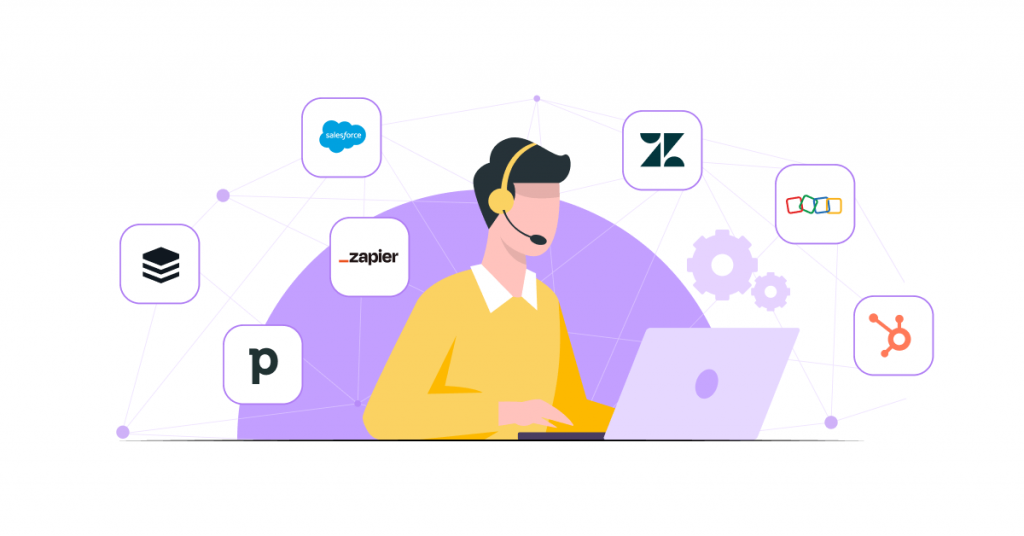
That also improves the experience for your reps, as they won’t have to toggle between multiple systems and tabs trying to locate information about customers during calls. For example, VoiceSpin seamlessly integrates with 80+ most popular CRM systems and business apps, including Zoho, Salesforce, HubSpot, and Zendesk, among others, so you can easily sync data across systems and enable your reps to deliver personalized customer experience.
CTI also enables other helpful features, such as click-to-call. That empowers your agents to make outbound calls by simply clicking on any number in your CRM system without having to dial numbers manually, which saves your team a great deal of time and effort.
Emerging Call Center Technology Trends
AI and Automation
Modern call center technology is mostly driven by the recent advancements in Artificial Intelligence. AI-based tools and automation solutions are going to optimize agent workflows, handle many routine tasks automatically, and streamline call center operations, allowing agents to focus on more value-added activities.
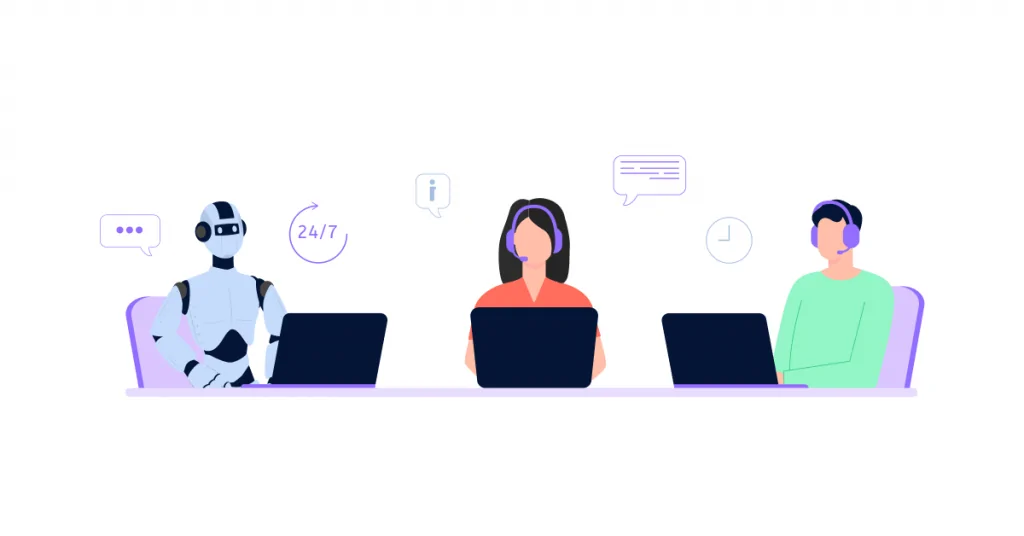
AI voice bots
AI voice bots (also known as AI voice agents) are becoming increasingly popular in call centers as more businesses are looking to automate their customer service operations. AI voice bots enable call centers to deliver 24/7 self-service support, empowering consumers to get answers to their questions and resolve issues on their own without having to rely on human reps. And what’s more, when integrated with CRM and other back-end systems, some of the most advanced AI voice bots can help callers book appointments, manage orders, book reservations, process refunds, and do so much more.
Recommended reading: Customer Service AI Voice Bots: The Ultimate Guide
AI chatbots
AI-powered conversational chatbots are also seeing an increased adoption in call centers and contact centers. Similarly to AI voice bots, AI chatbots can instantly answer repetitive questions, guide customers to resolutions, and troubleshoot simple issues – all without getting your customer service reps involved. That ultimately means you can extend your support availability and reduce the inbound call volume and the load on your team without increasing your support costs. No wonder that, according to Gartner, by 2027, chatbots will become the primary customer service channel for nearly a quarter of organizations.
AI agent assist tools
Generative AI-based agent assist tools empower call center agents to resolve customer issues faster, improving productivity. They provide agents with real-time recommendations on how to best respond to customers right during interactions using Automatic Speech Recognition (ASR), Natural Language Processing, and machine learning technologies. That improves the experience for agents, eliminating the need to search for the relevant information manually, and enables them to handle issues more effectively, improving customer satisfaction.
AI speech analytics
AI-driven speech analytics is among the top emerging contact center technologies implemented in call centers. These solutions can transcribe and analyze calls in real time and provide you with deeper insights into agent performance and efficiency. Speech analytics tools also allow you to gauge customer sentiment and assess how callers feel while interacting with your reps. VoiceSpin’s AI Speech Analyzer can additionally generate AI post-call summaries based on specific requirements to help you assess the quality of interactions.
Additionally, AI speech analytics solutions enable you to get insights into customer behavior, trends, preferences, and points of frustration. It allows you to better understand what leads to customer dissatisfaction, identify customers at risk, and proactively prevent customer churn.
AI call summary
AI call summaries are AI-generated brief recaps of the conversations between your agents and customers or prospects. Using AI call summaries eliminates the need for manual note-taking for your reps and provides them with the full context of every conversation so they can follow up with customers or prospects more effectively. What’s more, AI call summaries can highlight key discussion points, action items, resolutions offered, and other valuable insights, empowering you to better assess the quality of each interaction. For example, VoiceSpin AI Speech Analyzer can generate AI call summaries based on your specific criteria and requirements.
AI quality assurance
AI is being widely incorporated into call center quality assurance processes. While manual QA is typically time-consuming, resource-intensive, and costly, AI-driven call center QA solutions allow you to speed up and optimize this process while also making it more cost-efficient. With AI call center quality assurance software, you can analyze and evaluate 100% of your calls, assess your team’s performance and the overall quality of customer interactions, and spot inefficiencies and improvement opportunities.
Omnichannel engagement
Today’s consumers demand flexibility in how they engage with brands and expect to be able to reach businesses through different communication channels rather than only by phone. According to a study by Salesforce, 78% of consumers prefer using different channels based on the context, while 71% have used multiple channels to start and complete a single transaction. At the same time, 69% of customers want connected experiences, and 72% expect all company representatives to have the same information about them.
To meet the rising consumer expectations for seamless omnichannel experiences, many voice-based call centers are now transforming into omnichannel communication centers. With an omnichannel solution, businesses enable customers to engage with them through various channels integrated into a single platform.
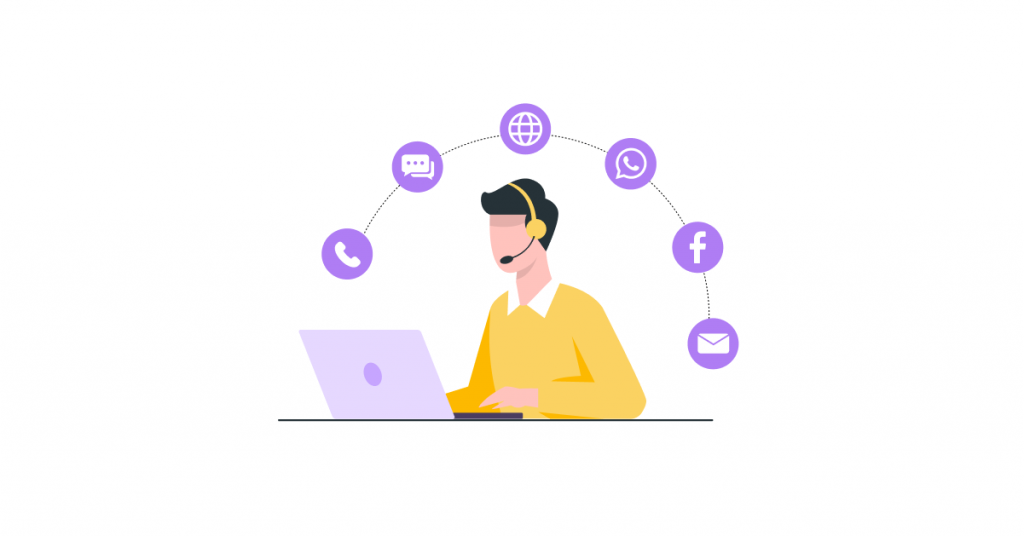
For example, VoiceSpin’s omnichannel contact center software solution supports customer communications across email, live chat, social media, WhatsApp, Telegram, and other instant messaging apps – and these channels don’t operate separately. Instead, the platform automatically syncs conversations across all these channels, giving your reps full context of previous interactions regardless of the channels customers use and enabling them to deliver omnichannel customer experiences.
Recommended reading: How to Implement Omnichannel Customer Service in Your Business
Cloud migration
Today, more businesses are moving their infrastructure to the cloud – and call centers are no exception. Especially following the pandemic and the rise of remote work, cloud-based call centers and contact centers have become the norm.
Since implementing cloud-based call center software technology brings a number of benefits to businesses – from cost-efficiency to almost instant scalability – cloud-based contact center solutions are now being increasingly adopted across industries. According to Mordor Intelligence, the cloud-based contact center market size is expected to reach USD 87.10 billion by 2029 (growing from USD 27.22 billion in 2024).
Unlike on-premises systems, cloud-based call center technology enables you to set up and run your virtual call center from anywhere without being tied to a specific physical location. You can also easily scale your call center operation by adding agents and resources to handle an increased call volume efficiently, while agents may enjoy more flexible schedules and a better work-life balance working remotely.
Power up Your Call Center with Advanced Call Center Technology
The right call center technology can truly streamline your call center processes, boost your team’s productivity, and empower your customer-facing teams with all the tools they need to serve customers better and sell more, ultimately improving the bottom line for your business. But the best call center solution is the one that offers both essential and advanced features and capabilities, wide integration options, and scalability opportunities to meet your future business needs.
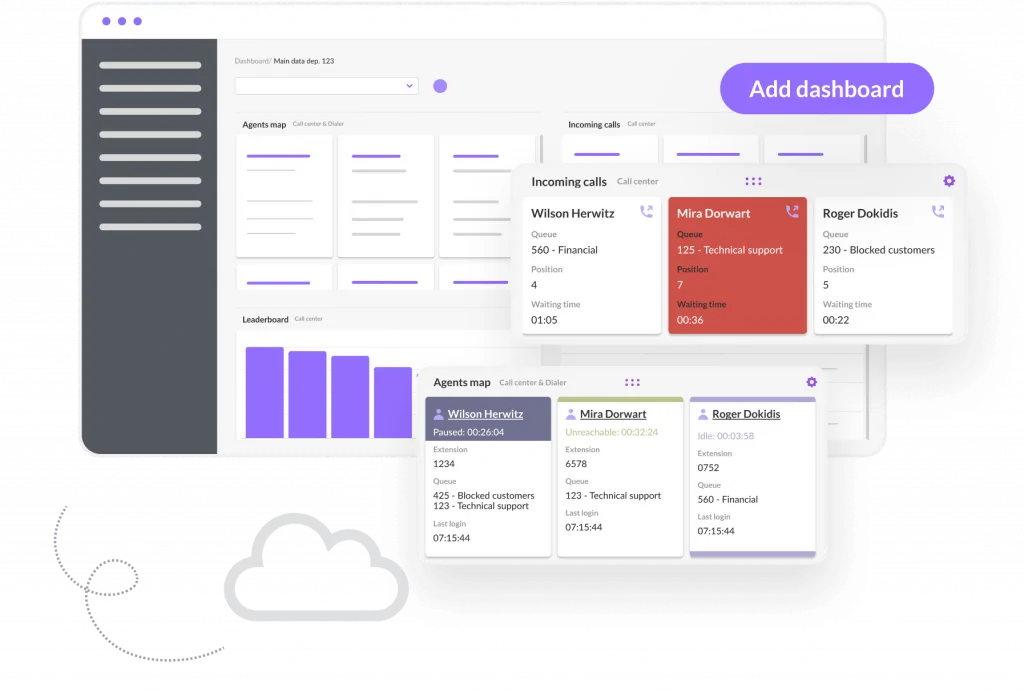
VoiceSpin has all the features your customer support and sales teams would ever need. With custom routing rules, IVR, call queue management features, and real-time call monitoring tools, your customer support team can process incoming customer interactions quickly and efficiently.
Likewise, with AI-powered auto dialing, your sales reps can run efficient outbound calling campaigns and maximize your sales conversions. Extensive out-of-the-box and custom integration options with the world’s popular CRM systems, AI speech analytics, and omnichannel messaging capabilities make it a powerful tool for both small and large call center teams.
On top of that, you can integrate an AI chatbot and an AI voice bot to automate your call center operations. Our AI-driven bots can support your customers 24/7 when your reps aren’t there, answer repetitive questions, reducing the load on your team, help customers get instant answers without being put on hold, automatically qualify your inbound leads, and do so much more.
Book a demo call now to learn more about VoiceSpin’s call center tools and technologies and how they can cater to your business needs.
FAQs:
What is the future of call center technology?
Call center technology has come a long way thanks to the latest advancements in AI, NLP, and machine learning. While core features like call routing, IVR, call queueing, call recording, and call monitoring remain important, the future of call center technology is clearly driven by AI and automation. In the near future, we’ll see wider adoption of AI-powered tools like voice bots, chatbots, speech analytics, sentiment analysis, and real-time agent assist solutions within call centers.
Will ChatGPT replace call centers?
Absolutely not. While ChatGPT and other AI tools can automate and improve many call center processes and operations, they can’t (and hardly ever will) fully replace call center reps. AI-powered bots might be incredibly helpful when it comes to answering FAQs and handling basic customer support requests. They can reduce wait times, improve CX, support agents behind the scenes, and even lower your operational costs. But when customers are frustrated or need help with complex requests, human call center reps remain irreplaceable because bots simply can’t replicate empathy and a human touch.
What are the latest call center technologies?
AI-powered voice bots (also known as AI voice agents) are truly one of the most exciting and impactful developments in the call center space. These solutions can answer your inbound calls, provide relevant information about your products or services, help callers resolve issues, book appointments, and do so much more – all without requiring human intervention. Plus, many voice bot solutions can also make outbound calls, qualify leads, and follow up automatically, which is a real game-changer for outbound call center teams.
How is AI transforming call centers?
AI is transforming call centers by automating operations, improving customer experiences, and reducing costs. For example, AI-powered bots can resolve support requests automatically, interact with your customers in different languages, and handle hundreds (or even thousands!) of interactions simultaneously. That helps you deliver round-the-clock support, reduce costs, and free up your human agents to focus on complex requests. What’s more, AI speech analytics tools can extract valuable insights from every call and automate your entire call center QA process. These tools can help uncover trends, flag compliance violations, and identify agent training gaps.



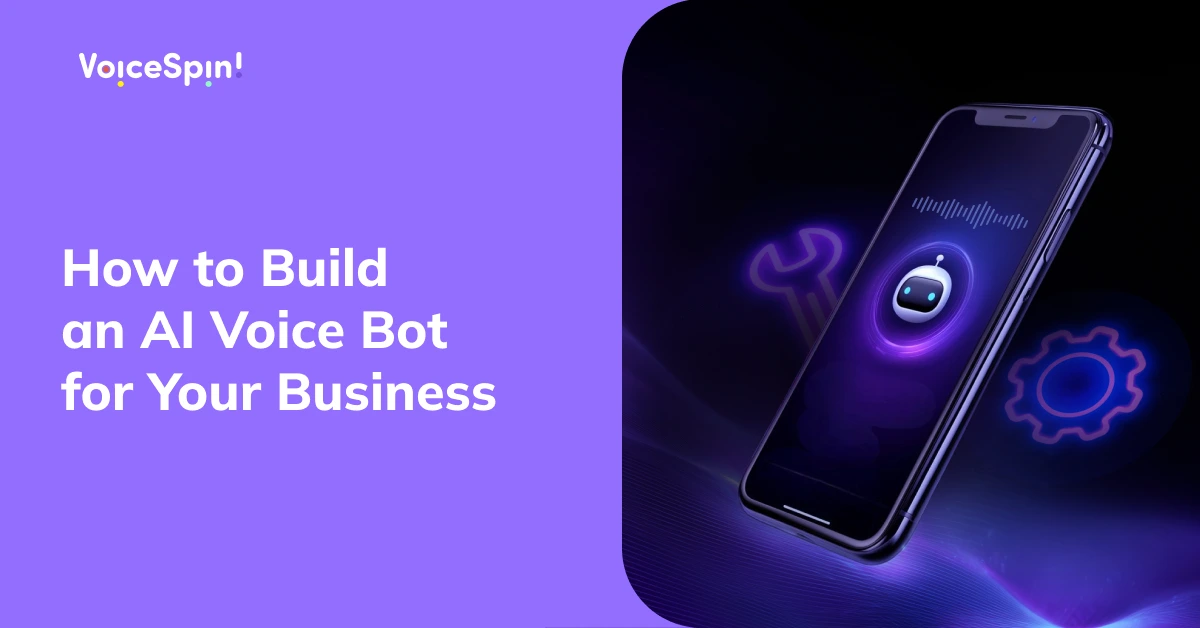
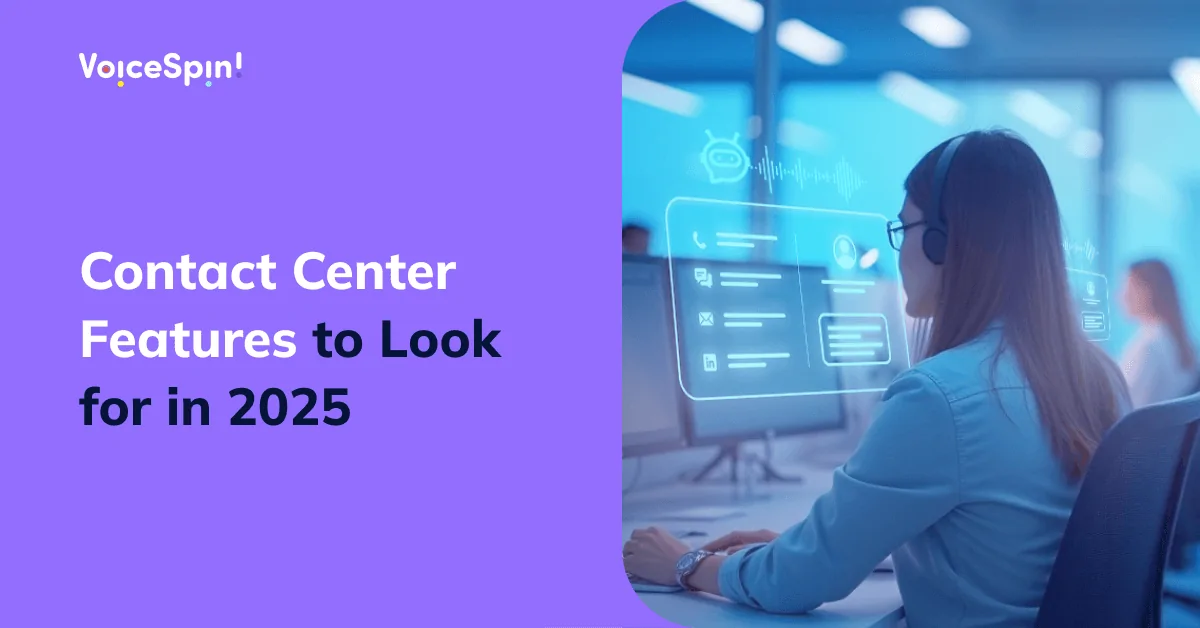
 +18889082995
+18889082995
 +442036084160
+442036084160
 +97237237006
+97237237006